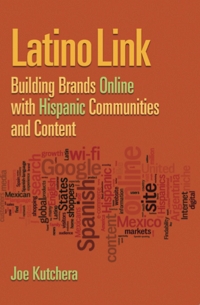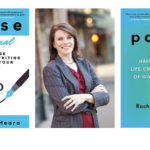This article originally appeared on MediaPost.
Where will many Hispanics and other Spanish-speakers around the world first experience the Internet? Interestingly, because they lag behind the general population for Internet access, many will first go online via their cell phones. In fact, they significantly over-index when consuming mobile content.
According to comScore m:metrics, 71% of Hispanics consume content on cell phones compared to the market average of 48%. In addition, Hispanics tend to notice and respond well to ads on cell phones. Nielsen’s recent “Mobile Advertising Report” highlighted that Hispanic data users are more likely to recall seeing ads on mobile phones (41% compared with 30% of non-Hispanics) and more likely to have responded (22% vs. 13%).
One company reaching out to first-generation Hispanics via cell phones is Austin, Texas-based edioma, which offers English-language mini-courses on mobile phones. Presenting at the Portada conference in October, Larry Upton, edioma’s founder and president, seemed as if he was responding to Bill Gates’ utopian message at Davos in January 2008: “We have to find a way to make the aspects of capitalism that serve wealthier people serve poorer people as well.”
Or perhaps edioma provides an example of what Jim Stengel, P&G’s former CMO, calls “purpose-based marketing.” Stengel’s forthcoming book, Packaged Good, calls for a new marketing approach that “begins with a higher purpose – a higher ideal – that is at the core of every successful brand and organization.” Upton calls what edioma offers “enabling technology” that facilitates Hispanics’ assimilation into U.S. society while at the same time offering a meaningful platform for sponsors to reach out to Hispanics.
Not only does edioma provide a model for corporate media responsibility, it also provides a formula that other content providers and sponsors can utilize in a mobile environment. Publishers can offer customizable, user-controlled, learning-based content in short chunks via mobile phones for free in exchange for consumers watching targeted advertising. Opt-in data provided by consumers such as gender, age, language-preference and location (when GPS capability exists within the handset) can offer great insights into consumer behavior within a mobile learning application.
A January 2007 study for the Mobile Marketing Association found that over 48% of Hispanics interviewed were interested in receiving more information about learning English over their cell phones and over 73% of respondents indicated that they would be willing to watch a two-to-three-second advertisement on their mobile phone in exchange for free/discounted English lessons.
Edioma currently offers three language kits for Hispanics: one for housecleaning/gardening, another for banking and a third for retail shopping. Each contains 50 context-specific phrases for use on the job, at the bank, while shopping, or visiting the doctor with vocabulary that appears on the cell screen and the corresponding pronunciations via the headset. And starting this month, edioma will offer two sponsor-funded kits: a financial services language kit sponsored by a major bank and a hospitality kit with language lessons for Hispanics that work in fast food industry.
Upton says, “Language instruction programs (if properly designed) can offer valuable insight into the demographics of a mobile customer.” For example, Upton says that consumers who download phrase kits for specific situations, like “On the Job Site,” likely share key personal demographics — 18-35-year-old males — as others who download the same package.
While a variety of comparable products targeting executives who want to learn another language have been developed for the iPhone, edioma stands alone in targeting first-generation Hispanics with mobile-based language classes, according to Upton, although he tells me that other innovative mobile service providers have come to market with new services targeting Hispanics such as MPower Mobile’s service for sending and receiving money via cell phone.
When will other mobile providers follow Gates’ and Stengel’s lead? For example, might a cell phone provider offer to Hispanics what Virgin Mobile’s “Sugar Mama” program provides teens — an opportunity to earn free cell phone minutes in exchange for watching web-based “fund my phone” advertising messages or ads on a corresponding Facebook app?
In conclusion, mobile content and marketing may be a nascent category, but the numbers indicate that Spanish-speakers present a promising growth opportunity.







